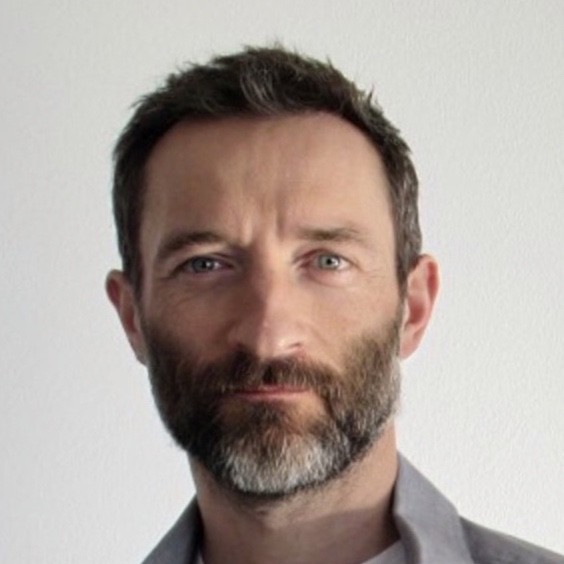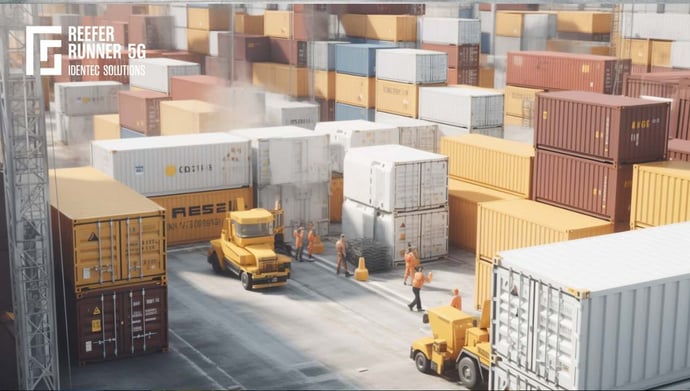Cold Chain Monitoring Solutions: An Overview
| Written by Mark Buzinkay
Maintaining the required temperature and humidity levels during transportation and storage in the dairy, food, beverage, and pharmaceutical industries is critical to ensure product quality, safety, and compliance with regulations. Cold chain monitoring solutions help track and maintain optimal conditions.
In our article, we discuss potential technical solutions for cold chain monitoring, their benefits and disadvantages, and suggest comprehensive systems for safe cold chain logistics.

No video selected
Select a video type in the sidebar.
What are cold chain monitoring solutions?
Cold chain monitoring solutions refer to technologies and systems designed to track, regulate, and ensure the safe transportation and storage of temperature-sensitive products across various industries, including food, beverage, pharmaceuticals, and biotechnology. These solutions help maintain the required temperature, humidity, and environmental conditions throughout the supply chain, preventing spoilage, contamination, or degradation of perishable goods.
"The cold chain consists of multiple stages, including production, storage, transportation, and distribution. Any temperature deviation at these stages can compromise product integrity, cause financial losses, and cause regulatory non-compliance", says Jordi Asensio, Product Manager with Identec Solutions. Cold chain monitoring solutions use sensors, IoT devices, data loggers, GPS trackers, and cloud-based platforms to provide real-time or recorded temperature data, ensuring compliance with strict industry regulations such as FDA, WHO, and EU GDP guidelines.
By automating temperature tracking and generating alerts for deviations, these solutions enable businesses to take immediate corrective action. This reduces waste, enhances product safety, and ensures customer satisfaction. Advanced cold chain monitoring solutions even integrate AI and predictive analytics to prevent failures before they occur, optimizing supply chain efficiency. Ultimately, cold chain monitoring is a crucial safeguard in ensuring that temperature-sensitive products remain within their required conditions until they reach the end consumer.
The global cold chain monitoring market has experienced significant growth in recent years, driven by the increasing demand for temperature-sensitive products across various industries, including pharmaceuticals, food, and beverages. According to a report by MarketsandMarkets, the market was valued at approximately USD 5.3 billion in 2022 and is projected to reach USD 10.2 billion by 2026, growing at a compound annual growth rate (CAGR) of 16.6% during the forecast period. (1) In contrast, Grand View Research reported a higher market valuation, estimating the global cold chain monitoring market size at USD 35.03 billion in 2024, with an anticipated CAGR of 23.0% from 2025 to 2030. (2)
This discrepancy in market valuations can be attributed to differences in market definitions, segmentation, and research methodologies employed by various analysts.
Despite these variations, the consensus indicates a robust upward trend in adopting cold chain monitoring solutions. Factors contributing to this growth include stringent government regulations regarding the storage and transportation of perishable goods, advancements in Internet of Things (IoT) technologies, and the increasing globalization of supply chains, which necessitate real-time monitoring to ensure product integrity.
As industries prioritize the quality and safety of temperature-sensitive products, the demand for advanced cold chain monitoring solutions is expected to remain strong, fostering innovation and competition among key market players.
Next, we assembled a list of nine classes of cold chain monitoring solutions, including their functionalities, benefits, drawbacks, and examples.

Temperature and Humidity Data Loggers
Temperature and humidity data loggers are compact, battery-powered devices that continuously record environmental conditions over time. These loggers are placed inside cold storage units, transport vehicles, or packaging to track temperature and humidity variations. They store data internally, which can be accessed later via USB, NFC, or Bluetooth, depending on the model. Some advanced loggers offer real-time transmission of data to cloud-based platforms.
These devices are essential in cold chain management as they provide historical records of temperature conditions. This data ensures compliance with industry regulations and helps identify periods of temperature deviation, which may have impacted product integrity. They are widely used in pharmaceuticals, food transportation, and beverage industries to maintain product safety and quality.
The primary advantages of temperature and humidity data loggers include affordability, ease of deployment, and reliability in tracking storage conditions. They are simple to use and can function independently without requiring extensive infrastructure. However, one of their main disadvantages is that most models require manual retrieval of data. Without real-time monitoring, users can only review the temperature history after a shipment has arrived, which might be too late to take corrective action.
Popular examples include the Testo 184 series, Elitech RC-5, LogTag TRIX-8, and Sensitech TempTale.
IoT-Based Wireless Sensors
IoT-based wireless sensors revolutionize cold chain monitoring by providing remote accessibility and real-time temperature and humidity tracking. These sensors are installed in refrigerated storage or transport units and transmit data continuously to cloud-based platforms using Wi-Fi, cellular, or LoRaWAN technology. Users can monitor temperature conditions remotely via web dashboards or mobile applications, making it easy to track shipments across multiple locations.
These sensors enhance efficiency by eliminating manual data collection and reducing response times in case of temperature deviations. They ensure that temperature-sensitive cargo, such as dairy products, frozen foods, and vaccines, remains within the required temperature ranges at all times. Automated alerts notify operators immediately if a deviation occurs, allowing them to take corrective actions before products are compromised.
The main advantages of IoT-based sensors are real-time monitoring, automation, and integration with cloud platforms. They enable predictive maintenance by analyzing trends in temperature fluctuations, thereby reducing losses. However, these systems can be expensive, requiring consistent network connectivity and a stable power source. Additionally, security risks, such as cyber threats, need to be managed effectively.
Prominent examples include Monnit ALTA, Blulog, Emerson GO Real-Time, and Sensaphone Remote Monitoring Systems.
RFID Temperature Sensors
RFID (Radio Frequency Identification) temperature sensors integrate RFID technology with temperature monitoring, allowing automated and contactless data collection. These sensors are embedded in RFID tags that can be attached to pallets, containers, or individual packages. RFID readers installed in warehouses, trucks, or cold storage facilities scan these tags as shipments pass through designated checkpoints.
RFID temperature sensors streamline inventory management and ensure that temperature compliance is maintained throughout the cold chain. Since RFID enables automatic scanning without human intervention, it eliminates errors associated with manual data logging. This makes RFID particularly beneficial in large-scale cold storage warehouses, food distribution centres, and pharmaceutical supply chains.
The key advantages of RFID temperature sensors include their ability to scan multiple shipments simultaneously, automation of data collection, and reduction of human error. However, the range of RFID signals is limited, requiring RFID readers at strategic locations. Additionally, metal surfaces and liquids can interfere with RFID signals, reducing accuracy in some environments. The initial investment in RFID infrastructure, including readers and software, can also be high.
Examples include CAEN RFID Temperature Logger, Fridge-tag 2 by Berlinger, and Zebra RFID Temperature Monitoring Solutions.
GPS-Based Cold Chain Trackers
GPS-based cold chain tracking combine location tracking with temperature monitoring, providing visibility into the real-time movement and condition of temperature-sensitive shipments. These devices are typically installed inside refrigerated transport containers, ensuring that logistics managers can track shipments in transit.
By leveraging GPS, cellular networks, and IoT connectivity, these trackers improve supply chain transparency and security. If a shipment deviates from its planned route or experiences a temperature fluctuation, alerts are immediately sent to relevant personnel, allowing quick interventions.
The main advantages of GPS-based trackers include real-time location and temperature tracking, enhanced cargo security, and better route optimization. However, they require a stable power source or long-lasting battery, making them less ideal for short-distance shipments that lack continuous power access. Additionally, the operating costs for data transmission can be high, depending on the tracking frequency.
Well-known GPS-based cold chain trackers include Sensitech GPS Trackers, Roambee BeeSense, DeltaTrak FlashLink, and Tive Tag.
Bluetooth Low Energy (BLE) Sensors
Bluetooth Low Energy (BLE) sensors offer cost-effective and energy-efficient temperature monitoring, particularly for closed environments such as warehouses, retail storage, and refrigerated transport vehicles. BLE sensors transmit temperature data to nearby smartphones, tablets, or dedicated BLE gateways.
These sensors help companies track temperature conditions within short-range environments, ensuring that perishable goods like dairy, meat, and seafood remain within safe temperature limits. BLE technology is highly useful in pharmaceutical and retail industries, where temperature-sensitive inventory must be continuously monitored.
The advantages of BLE sensors include low power consumption, affordability, and seamless integration with mobile apps. However, BLE has a limited range (typically 30-100 meters), making it unsuitable for long-haul shipments unless coupled with cloud-based gateways. Interference from other Bluetooth devices can also impact performance.
Examples include Tempmate-BLUE, SpotSee TempSafe, and Blulog BLE Loggers.
Smart Refrigerated Containers (Reefers)
Smart refrigerated containers, or reefers, are temperature-controlled shipping containers equipped with automated cooling and monitoring systems. These containers self-regulate their internal temperature, ensuring that goods remain in optimal conditions regardless of external temperature fluctuations.
Reefers are ideal for long-distance transportation of pharmaceuticals, frozen foods, and fresh produce. They offer real-time temperature adjustments and remote monitoring capabilities, reducing the risk of spoilage.
The biggest advantage of reefers is their high reliability in maintaining stable temperatures. However, they require significant energy consumption and are expensive to maintain. Any mechanical failure can result in cargo loss if not addressed immediately.
Notable examples include Maersk Star Cool, Thermo King TracKing, and Carrier Lynx Fleet.
Cloud-Based Cold Chain Monitoring Platforms
Cloud-based cold chain monitoring platforms provide centralized tracking of temperature data across multiple shipments and storage facilities. These platforms collect data from IoT sensors, RFID tags, and GPS trackers, offering real-time visibility.
The main advantages include comprehensive analytics, remote monitoring, and compliance tracking. However, they depend on stable internet connectivity and can involve recurring subscription costs.
Popular solutions include Controlant, Sensitech ViewPoint, and Zebra Cold Chain Monitoring.
Dry Ice & Cryogenic Monitoring Solutions
For ultra-cold storage (-80°C and below), specialized monitoring solutions track cryogenic shipments such as vaccines and biological samples. These sensors ensure that dry ice or liquid nitrogen conditions remain stable. The main challenges include high costs, special handling requirements, and sensor durability. Examples include Sofrigam Cryologger and Berlinger SmartView.
AI & Predictive Analytics for Cold Chain
AI-driven cold chain solutions analyze temperature trends, predict equipment failures, and optimize logistics. These technologies reduce spoilage rates and improve efficiency. The key drawback is high implementation costs and the need for extensive data. Examples include Thermo King ConnectedSuite and Carrier Lynx Fleet AI.

Cold chain management and monitoring
Reefer Runner 5G is a comprehensive cold chain monitoring and management system designed to provide real-time visibility and control over refrigerated containers - in a depot or on the move. It integrates advanced technologies to ensure the integrity of temperature-sensitive cargo throughout transportation and storage.
Key Features:
- Real-Time Monitoring: Reefer Runner 5G offers continuous, automated monitoring of individual refrigerated containers, providing real-time data on temperature and other critical parameters.
- Automated Alerts: The system is equipped with an alarm feature that triggers immediate notifications in the event of temperature deviations or emergencies, enabling swift corrective actions.
- Integration Capabilities: Reefer Runner 5G seamlessly integrates with Terminal Operating Systems (TOS) and other IT infrastructures, facilitating streamlined operations and data management in ports.
- Wireless Connectivity: Utilizing wireless technology, Reefer Runner 5G ensures easy installation and scalability, making it adaptable to various operational needs without extensive infrastructure modifications. It transfers all relevant data from the reefer to the cloud.
FAQ: Cold Chain Monitoring Solutions
What are cold chain monitoring solutions, and why are they important?
Cold chain monitoring solutions are technologies designed to track and maintain the temperature, humidity, and environmental conditions of perishable goods throughout transportation and storage. They are essential in industries like food, beverages, pharmaceuticals, and biotechnology to prevent spoilage, ensure product safety, and comply with regulatory standards. Without proper monitoring, temperature-sensitive products risk degradation, leading to financial losses and potential health hazards.
How do cold chain monitoring solutions work?
These solutions use a combination of sensors, IoT devices, GPS trackers, and cloud-based platforms to monitor and record real-time data. Temperature and humidity sensors placed in refrigerated storage or transport units collect environmental data, which is transmitted to cloud systems for remote access. In case of deviations from the required conditions, automated alerts notify logistics operators, enabling immediate corrective actions. Some advanced solutions integrate AI-driven predictive analytics to anticipate failures before they happen, further enhancing supply chain efficiency.
What are the latest innovations in cold chain monitoring?
Recent advancements include 5G-enabled monitoring systems, AI-powered predictive maintenance, and blockchain technology for secure data tracking. One notable innovation is Reefer Runner 5G, which provides real-time visibility and automated alerts for refrigerated containers. Its wireless connectivity and seamless integration with terminal operating systems make it a powerful tool for logistics and supply chain managers, ensuring greater efficiency in temperature-sensitive cargo transportation.
Takeaway
Cold chain monitoring is essential for maintaining product integrity in industries where temperature-sensitive goods must be transported and stored under strict conditions. Advanced technologies, such as IoT sensors, GPS trackers, and cloud-based platforms, play a crucial role in preventing spoilage and ensuring regulatory compliance. Among the latest innovations, Reefer Runner 5G stands out as a leading solution for managing refrigerated containers. With real-time monitoring, automated alerts, and seamless system integration, it provides unparalleled control over temperature-sensitive cargo. Its wireless connectivity ensures continuous data transmission to the cloud, optimizing logistics and improving supply chain efficiency across ports and distribution networks.
Delve deeper into one of our core topics: Cold chain monitoring
Glossary
Wireless connectivity refers to the transmission of data between devices without the use of physical cables, utilizing electromagnetic waves such as radio frequencies, infrared, or satellite signals. This technology enables devices like computers, smartphones, and sensors to communicate over networks, facilitating mobility and flexibility in various applications. Wireless networks are commonly used in homes, businesses, and public spaces to provide internet access and support communication between devices. (3)
Sources:
(1) https://www.marketsandmarkets.com/Market-Reports/cold-chain-monitoring-market-161738480.html
(2) https://www.grandviewresearch.com/industry-analysis/cold-chain-monitoring-market
(3) https://www.fortinet.com/resources/cyberglossary/wireless-network

Author
Mark Buzinkay, Head of Marketing
Mark Buzinkay holds a PhD in Virtual Anthropology, a Master in Business Administration (Telecommunications Mgmt), a Master of Science in Information Management and a Master of Arts in History, Sociology and Philosophy. Mark spent most of his professional career developing and creating business ideas - from a marketing, organisational and process point of view. He is fascinated by the digital transformation of industries, especially manufacturing and logistics. Mark writes mainly about Industry 4.0, maritime logistics, process and change management, innovations onshore and offshore, and the digital transformation in general.




